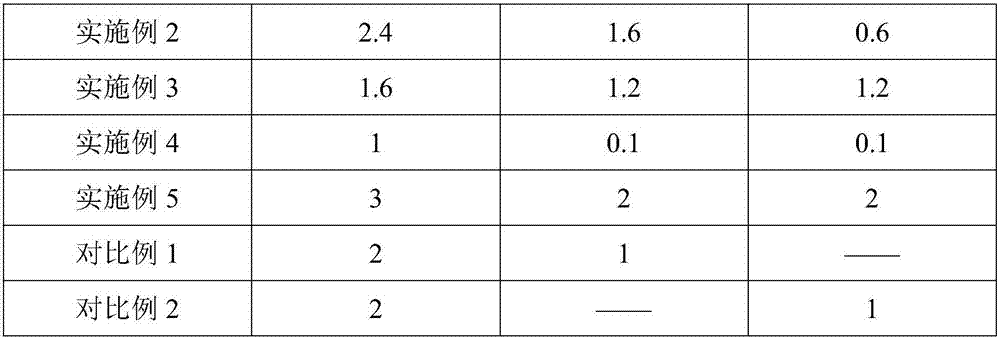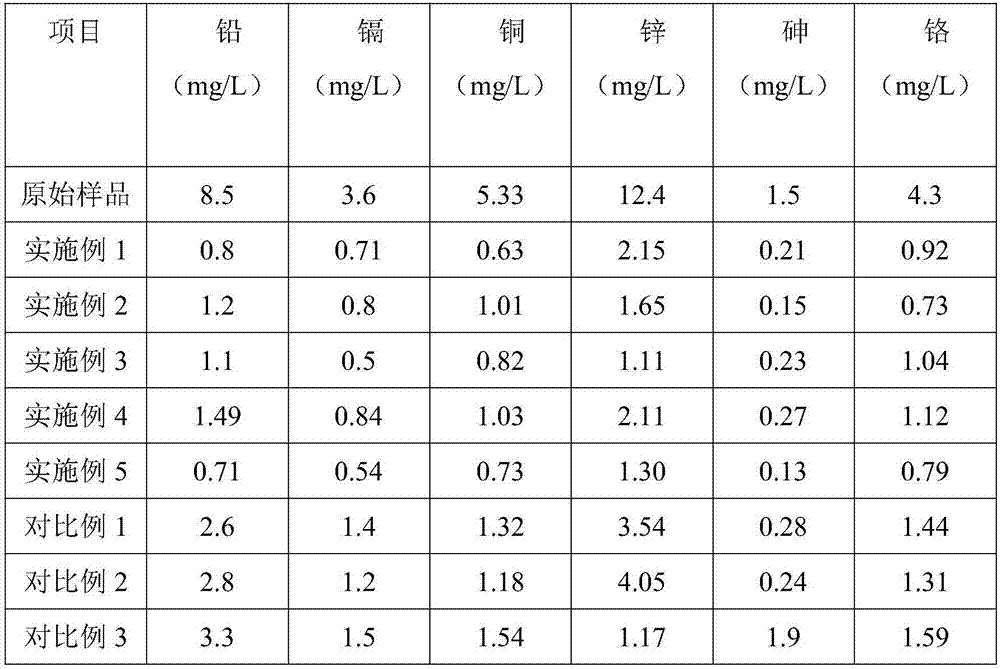Preparation method and application of heavy metal contaminated soil/bottom mud stabilizer
A technology of polluted soil and heavy metals, applied in the restoration of polluted soil, application, soil conditioning materials, etc., can solve the problems of low cost of heavy metal remediation agent, poor stabilization effect of arsenic-containing heavy metal compound polluted sediment, etc., to achieve stabilization Good effect, low cost and low energy consumption
- Summary
- Abstract
- Description
- Claims
- Application Information
AI Technical Summary
Problems solved by technology
Method used
Image
Examples
Embodiment 1
[0043] (1) Heavy metal pollution belongs to contaminated soil / sediment stabilizer, which is composed of soluble iron salt, dibutyl dithiophosphate and butyl dithiocarbonate in proportion. The specific ingredients are shown in Table 1.
[0044] (2) The use method of heavy metal polluted soil / bottom mud stabilizer, comprises the following steps:
[0045] S1. Pretreatment stones, rhizomes, various newborn bodies and invasive bodies in a channel in Qingshuitang Industrial Zone, Zhuzhou City, which were seriously polluted by heavy metals, after natural air drying, mixed evenly, weighed 500g, and used four Grinding through a 100-mesh sieve by separate method; obtain the mud bottom to be treated;
[0046] S2. under room temperature, add 500g deionized water to the bottom mud to be treated in step S1, and dilute; then add 50g of soluble iron salt (ferrous sulfate 60wt%, ferrous chloride 30wt%, ferrous chloride 10wt%) %), mixed uniformly, reacted for 8h, and had a natural pH value to ...
Embodiment 2
[0050] (1) Heavy metal pollution belongs to contaminated soil / sediment stabilizer, which is composed of soluble iron salt, dibutyl dithiophosphate and butyl dithiocarbonate in proportion. The specific ingredients are shown in Table 1.
[0051] (2) the using method of heavy metal polluted soil / bottom mud stabilizer, its step is identical with embodiment 1, and its difference is:
[0052] In step S2, the soluble iron salt (ferrous sulfate 70wt%, ferrous chloride 30wt%) is 60g, and the reaction time is 8h;
[0053] In step S3, dibutyl dithiophosphate (dibutyl potassium dithiophosphate 50wt%, dibutyl sodium dithiophosphate 30wt%, dibutyl ammonium dithiophosphate 20wt%) is 40g, react The time is 6h;
[0054] In step S4, the amount of butyl dithiocarbonate (50% wt of potassium butyl dithiocarbonate, 50% wt of sodium butyl dithiocarbonate) is 25 g, and the reaction time is 10 h.
Embodiment 3
[0056] (1) Heavy metal pollution belongs to contaminated soil / sediment stabilizer, which is composed of soluble iron salt, dibutyl dithiophosphate and butyl dithiocarbonate in proportion. The specific ingredients are shown in Table 1.
[0057] (2) Belong to the using method of polluted soil / bottom mud stabilizer, its step is identical with embodiment 1, and its difference is:
[0058] In step S2, the soluble iron salt (ferrous sulfate 60wt%, ferric chloride 30wt%, ferrous chloride 10wt%) is 50g, and the reaction time is 10h;
[0059] In step S3, dibutyl dithiophosphate (dibutyl dithiophosphate potassium 70wt%, dibutyl ammonium dithiophosphate 30wt%) is 25g, and the reaction time is 8h;
[0060] In step S4, butyl dithiocarbonate (dibutyl potassium dithiophosphate 70wt%, dibutyl ammonium dithiophosphate 30wt%) is 25g, and the reaction time is 6h.
PUM
 Login to View More
Login to View More Abstract
Description
Claims
Application Information
 Login to View More
Login to View More - R&D
- Intellectual Property
- Life Sciences
- Materials
- Tech Scout
- Unparalleled Data Quality
- Higher Quality Content
- 60% Fewer Hallucinations
Browse by: Latest US Patents, China's latest patents, Technical Efficacy Thesaurus, Application Domain, Technology Topic, Popular Technical Reports.
© 2025 PatSnap. All rights reserved.Legal|Privacy policy|Modern Slavery Act Transparency Statement|Sitemap|About US| Contact US: help@patsnap.com



